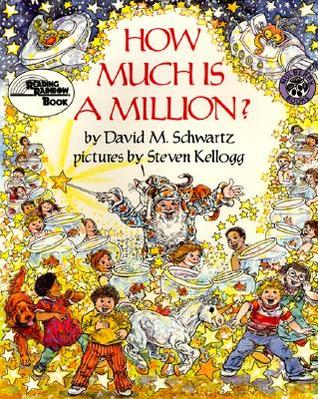We began by reading:

It's a really entertaining and thought-provoking picture book that got us trying to comprehend what large numbers like billions and trillions are really. We agreed they are so difficult to comprehend.
From this, I presented this question on the board:
What do we want to discover about our base 10 number system?
I recorded questions they were curious about which also raised some interesting mini-discussions such as:
° What numbers come after trillion?
° What is the biggest number? / What is the smallest number?
° Are there decimal numbers smaller than hundredths?
° Why would we need decimal numbers after hundredths?
° How many thousands are there in a trillion?
Using our laptops and MAB manipulatives, we investigated questions we personally were curious about.
Some of our discoveries were really amazing:
Really? A zillion doesn't exist in maths?
We wondered why we use the word zillion then.
Someone shared a theory that it makes sense to say zillion since we say billion and trillion. Thinking of a number that begins with Z must mean its really large because it is the last letter of the alphabet.
That made sense to us!
Why do we need tiny decimal numbers fascinated a lot of us.
We loved this discovery: an average bacteria weighs 1 billionth of a gram!!!
So that's why we never feel them on our fingers or as they enter our mouths we figured.
There was some debate about how large a googol was.
Those who had found out about this felt a googol was 1 with 100 zeros!
Thinking this was a huge number, someone later shared they discovered that a googolplex is even larger!
We wondered if that is how Google got its name? Because it has so many web searches?
Sounded plausible....
This student's dad works for a company that uses atomic calculations.
His original theory was that they must use either really, really large numbers or really, really tiny decimal numbers.
He was surprised to discover that they use ordinary 'everyday' numbers like 12 . 8.
I really liked how he was given an opportunity to connect with the types of maths his dad uses at work.
What numbers are larger than a trillion?
But look how large a tredecillion is!!!
This was another important discovery for us to understand as most of us previously thought hundredths or thousandths was as small as numbers became.
We now how a more solid understanding that numbers go on infinitely in both directions on the number line. Reading the book 'How much is a million?' helped us gain an understanding of why we might need large numbers and some of us today shared their discoveries of why we might need such tiny decimal numbers.
We all felt like successful enquiriers and mathematicians today.
To further solidify our understanding that numbers go on infinitely in both directions, partners were given all the place values from decillions to decillionths.
We had the online timer displayed and together they needed to arrange the place values in order as quickly as possible.
Not knowing the place values after trillions, they were able to infer from the larger number names:
° quad means 4 so quadrillions / quadrillionths....
° oct means 8 so octillions / octillionths...
° dec means 10 so decillions / decillionths
etc
When they had finished arranging them all, they recorded the time it took them. We will try this again later in the week to see if we can beat our original times.
Reflecting in a discussion afterwards, we determined that it isn't really that important to know the place values of really large or really tiny decimal numbers, but we did agree that our big picture discovery that place values go on infinitely in both directions IS an important understanding for us to make.
I'm glad a read that Tweet this morning. It inspired me to give the children opportunities to create and discover questions of their own.
It made their learning of our number system so much more powerful and meaningful. They gained big picture understandings that a teacher-directed or worksheet activity could not have provided so effectively.....
 Andrew Blair
Andrew Blair 







Nice
ReplyDelete